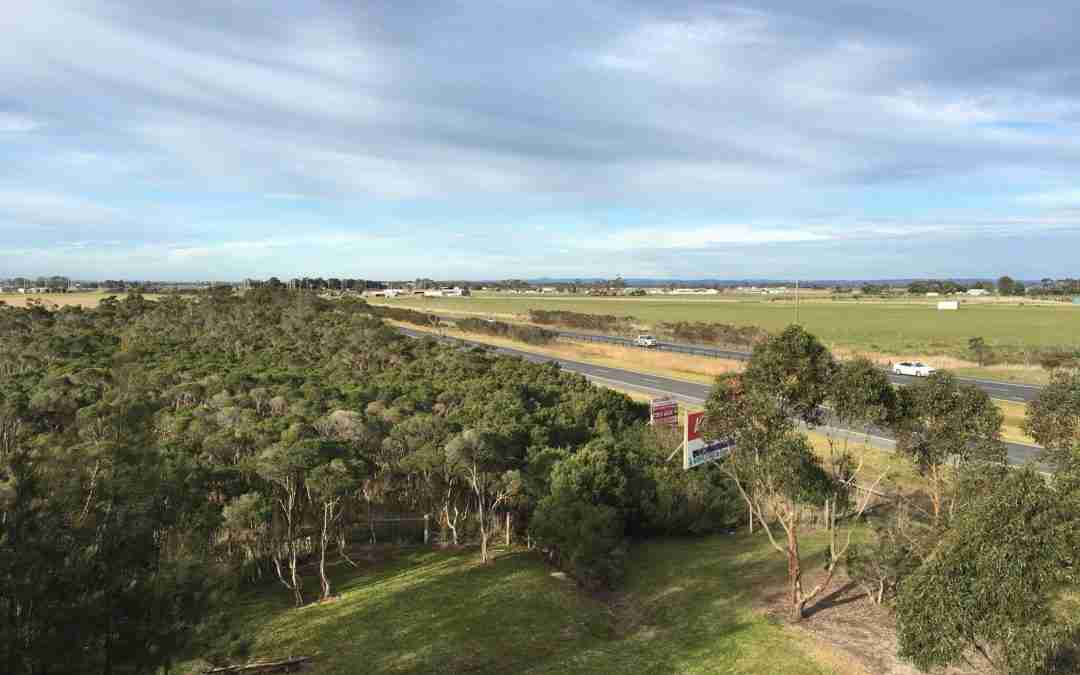One of the most interesting discoveries I’ve made during the course of my research is the sheer number of my ancestors who either emigrated to Australia, or were born there because of their parents’ decision to leave the ‘mother country behind’. The emigration was driven, as previously noted, by three of the children of Thomas Coates, a Scottish-born mariner whose death in 1881 seems to have been the trigger for his many children to look for opportunities to make their way in the world.
As far as I can tell, the first to leave England for Australia was Lawrence Coates (1858 – 1952). Lawrence and his wife, Mary Jane (Wilson), emigrated some time after their marriage in 1883; the birth location of their eldest child (Ann, born 1885) is uncertain, but their subsequent 9 children were all born in Australia. It is likely that Lawrence and Mary Jane emigrated in 1884 or 1885, possibly while Mary Jane was pregnant with Ann.
Lawrence and Mary Jane settled in Koo-Wee-Rup, Victoria (pictured, above), where market gardens had been established. Lawrence was a Ship Smith by trade but it is virtually impossible to verify whether he continued to work in that field, given that no information about individuals survives from Australian censuses from 1901 to 1996. It was government policy to destroy census forms after statistical analysis was completed.
We do know that Lawrence and Mary Jane’s fifth son, Lawrence junior, was killed fighting in the Battle of the Somme in 1916 and that they had a total of 10 children; six boys and four girls. Not all had children of their own, but I’m continuing to research those who did.
I have learned that I do definitely have living relatives ‘Down Under’, thanks to the second of Thomas Coates’ sons to try his luck in Australia.
William Withers Coates (1866-1955), who had been apprenticed as a Ship Plater, was just 18 when he arrived in Brisbane on 30th March 1885. Fourteen months later, William married Mary McCarthy and their first child, Thomas, was born in 1887. Thomas, the oldest of five siblings, became a successful grain trader in Brisbane and his son, Robert, became a doctor. Robert’s five children (my third cousins, once removed) all went on to have successful careers and families of their own.
Of the three of my great-great-great uncles to have emigrated to Australia, it could be argued that William left the greatest legacy; quite apart from the fact that his descendants have thrived in Queensland, there is a Coates Street in Morningside, Brisbane, named after our family, on which there are still residents bearing our humble surname.
Lawrence and William would have had good reasons for making the long journey south. During the 1880s, the Australian economy was booming and migrants skilled in maritime trades, as they both were, received offers of better working conditions and pay. However, a four year drought which began in 1890 crippled the economy, leading to widespread unemployment and poverty.
I have been puzzled by the third emigration, that of Scott Marsh Coates (1862-1955), because it occurred so much later than his brothers’ decisions to move. We know that Scott was still heading a household in Sunderland as late as 1911, thanks to the Census records of the time, so we know that the relocation of Scott, his wife Mary Jane (Preece) and their four youngest daughters occurred some time after that. This is curious because Scott was nearly 50 at the time of the 1911 Census, which seems quite late in life to make such a significant change.
However, given that Scott was working as a bricklayer in Sunderland, his only son had been killed fighting in the Second Boer War in 1902 and two of his three eldest daughters had emigrated to Canada, I can see why he might have been open to a change. The older daughter still in the UK, Mary Elizabeth, (1888-1968) was married to a Merchant Seaman and resident in Portsmouth by 1911 and would settle in Victoria, as her parents did, so perhaps it was a family decision. The National Archives of Australia do indicate that a “short-lived immigration boom occurred in Australia from 1910 to 1913” and that “women, especially domestic servants… were much coveted owing to the high demand for them in Australia”. In this context, perhaps emigrating was a logical decision for Scott, particularly if it offered better prospects for his daughters.
Life in Victoria obviously agreed with Scott to a certain extent, given that he lived to the age of 92.
It is incredible to think that all three brothers would have spent anything up to 12 weeks at sea in an effort to create opportunities for themselves or their children. It makes my own moves around England seem pedestrian by comparison but the relocation decisions I’ve taken have something in common with those taken by my ancestors; we have all packed up and gone in an effort to improve the lives of our families.
